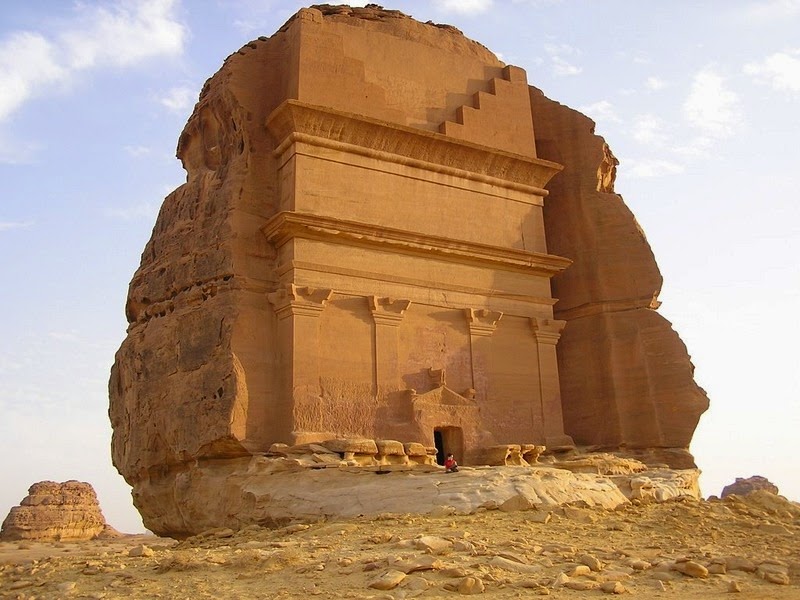The Honghe Hani Rice Terraces in Southern Yunnan, China, covers an immense 16,603-hectares. These spectacular terraces cascade down the slopes of the towering Ailao Mountains to the banks of the Hong River. The terraces rise by 3,000 steps at varying angles from a shallow 15 degrees to a steep 75 degrees, forming a magnificent landscape that is rare both at home and abroad. Over the past 1,300 years, the Hani people have developed a complex system of channels to bring water from the forested mountaintops to these terraces. They have also created an integrated farming system that involves buffalos, cattle, ducks, fish and eel and supports the production of red rice, the area’s primary crop.
The Hani people first came to the steep mountains some 2,500 years ago. They struggled against the difficult terrain, successfully establishing the terraces, where they grew rice in order to make a living. The technology of developing fertile land on rugged mountain slopes didn't spread all over China and Southeast Asia until 14th century. In recognition of the Hani people’s creativity, the Ming Dynasty emperor granted them the title of 'Skillful Sculptor' and their good reputation was passed down from generation to generation. Last week, the terraced fields were officially acknowledged by UNESCO as a World Cultural and Natural Heritage site.

Although not exactly a tourist destination, hordes of photographers have visited Yuanyang Rice Terraces. The landscape changes vividly through the year. In April the terraces are all green as rice started to grow, in later parts of the year it is yellowish brown as the rice ripens. In February, the terraces become naked bare earth, with the water reflecting the sky.
"The Honghe Hani terraces are an outstanding reflection of elaborate and finely tuned agricultural, forestry and water-distribution systems that are reinforced by long-standing and distinctive socioeconomic-religious systems," said the council in the announcement last Saturday..
"Its terraced landscape reflects, in an exceptional way, a specific interaction with the environment mediated by integrated farming and water-management systems, and underpinned by socioeconomic-religious systems that express the dual relationship between people and gods, and between individuals and community, a system that has persisted for at least a millennium, as can be shown by extensive archival sources."
The Honghe Hani Rice Terraces marks China's 45th World Heritage and 31st World Cultural Heritage, making China the second country with the most nominations, after Italy.














Source
READ MORE»
The Hani people first came to the steep mountains some 2,500 years ago. They struggled against the difficult terrain, successfully establishing the terraces, where they grew rice in order to make a living. The technology of developing fertile land on rugged mountain slopes didn't spread all over China and Southeast Asia until 14th century. In recognition of the Hani people’s creativity, the Ming Dynasty emperor granted them the title of 'Skillful Sculptor' and their good reputation was passed down from generation to generation. Last week, the terraced fields were officially acknowledged by UNESCO as a World Cultural and Natural Heritage site.

Although not exactly a tourist destination, hordes of photographers have visited Yuanyang Rice Terraces. The landscape changes vividly through the year. In April the terraces are all green as rice started to grow, in later parts of the year it is yellowish brown as the rice ripens. In February, the terraces become naked bare earth, with the water reflecting the sky.
"The Honghe Hani terraces are an outstanding reflection of elaborate and finely tuned agricultural, forestry and water-distribution systems that are reinforced by long-standing and distinctive socioeconomic-religious systems," said the council in the announcement last Saturday..
"Its terraced landscape reflects, in an exceptional way, a specific interaction with the environment mediated by integrated farming and water-management systems, and underpinned by socioeconomic-religious systems that express the dual relationship between people and gods, and between individuals and community, a system that has persisted for at least a millennium, as can be shown by extensive archival sources."
The Honghe Hani Rice Terraces marks China's 45th World Heritage and 31st World Cultural Heritage, making China the second country with the most nominations, after Italy.














Source




















